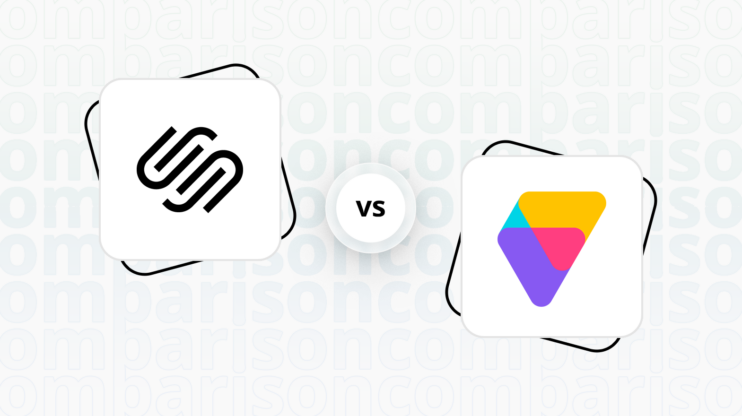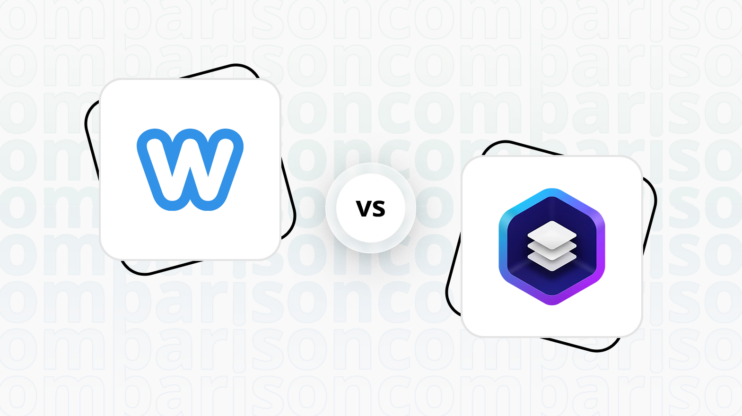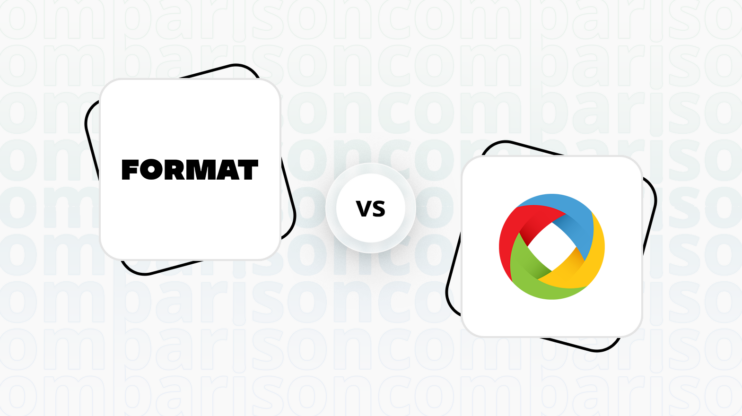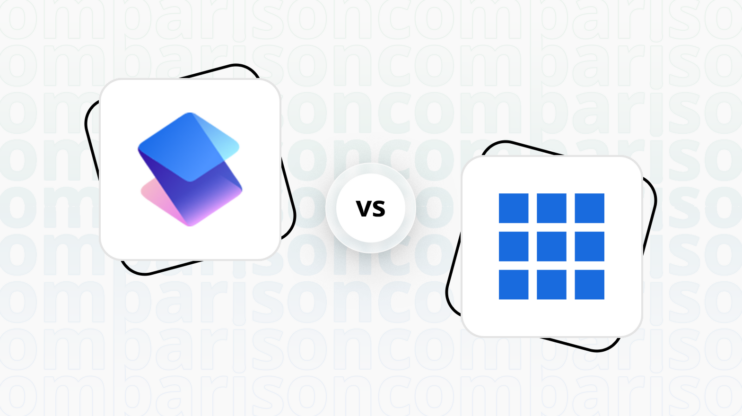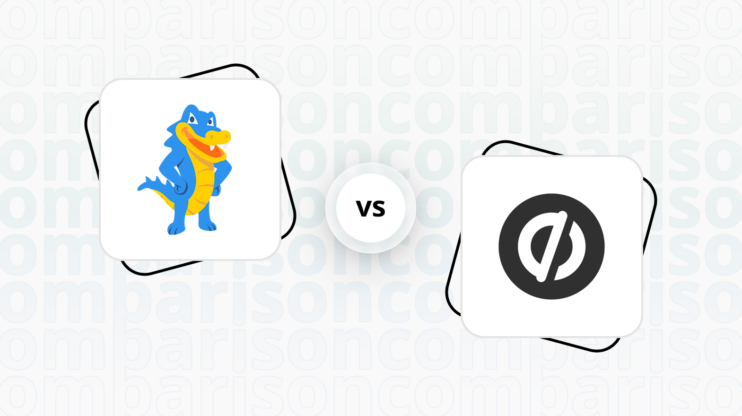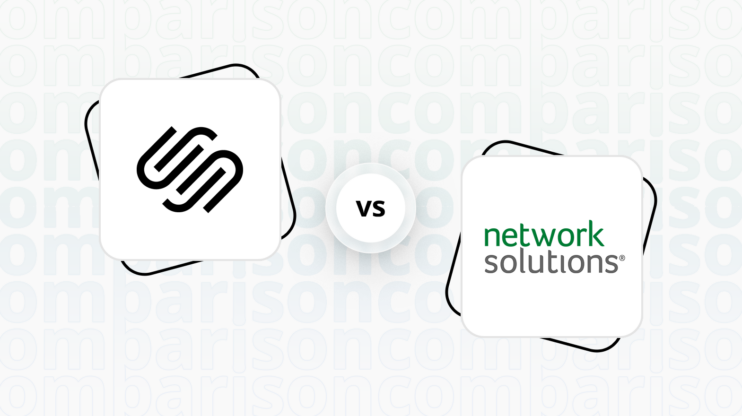Final verdict
WordPress and Portfoliobox both offer unique advantages, but they cater to different user needs.
-
WordPress (Overall Grade: 7.1/10)
is a versatile open-source content management system that excels in customization and flexibility. It is ideal for users who need extensive control over their website’s design and functionality, making it suitable for blogs, business sites, and online stores. With a vast array of plugins and themes, WordPress offers unparalleled customization options, though it comes with a steeper learning curve. -
Portfoliobox (Overall Grade: 6.1/10)
is a user-friendly website builder designed specifically for creative professionals. It provides an intuitive drag-and-drop interface and customizable templates, making it easy to create stunning portfolios without technical skills. While it may lack some advanced features and flexibility compared to WordPress, Portfoliobox is perfect for artists, photographers, and other creatives looking to showcase their work online.

|

|
|
|---|---|---|
|
Design functionalities & templates |
9.0 |
7.5 |
|
Ease of use |
7.2 |
8.1 |
|
Ecommerce |
8.4 |
5.8 |
|
Website Editors |
8.5 |
7.5 |
|
Product testing options |
8.1 |
9.1 |
|
Price |
5.9 |
7.9 |
|
Hosting quality |
0 |
6.5 |
|
Website speed optimization |
6.5 |
6.4 |
|
Plugins/extensions and integrations |
8.8 |
7.2 |
|
Marketing features |
8.0 |
7.0 |
|
Customer support |
5.0 |
7.0 |
|
Website security |
6.7 |
8.1 |
|
AI capabilities |
6.1 |
0 |
|
User Management |
8.8 |
2.8 |
Best for ecommerce
 8.4
8.4
 5.8
5.8
Verdict
: WordPress is a robust choice for ecommerce with its extensive customization and plugin options, while Portfoliobox is more suited for creative professionals with basic ecommerce needs.
-
WordPress
: Leveraging plugins like WooCommerce, WordPress provides a comprehensive ecommerce solution with extensive customization options. It supports multiple payment gateways, abandoned cart recovery, and detailed analytics, making it suitable for a wide range of online stores. However, the extensive features and plugins may require a steeper learning curve compared to Portfoliobox. -
Portfoliobox
: Designed for creative professionals, Portfoliobox offers a user-friendly interface with basic ecommerce features. It supports product listings, payment gateways, and order management, making it ideal for artists and photographers looking to sell their work online. However, it lacks the advanced ecommerce functionalities and customization options that WordPress offers, making it less suitable for larger businesses.
Best for informational & business websites
 9.2
9.2
 7.5
7.5
Verdict
: WordPress is the superior choice for informational and business websites due to its extensive customization options, vast plugin ecosystem, and robust design functionalities. Portfoliobox, while user-friendly and tailored for creative professionals, falls short in comparison to WordPress’s versatility and comprehensive features.
-
WordPress
: Scoring 9.2, WordPress excels in providing a highly customizable platform with a wide range of templates and plugins. Its open-source nature allows for extensive flexibility, making it suitable for various types of informational and business websites. The platform’s powerful site editor and extensive learning resources further enhance its appeal, despite a steeper learning curve. -
Portfoliobox
: With a score of 7.5, Portfoliobox is designed for creative professionals, offering an intuitive drag-and-drop interface and customizable templates. It is ideal for users looking to create professional portfolios without technical skills. However, it lacks the extensive customization and plugin options that WordPress offers, making it less versatile for broader business needs. When comparing WordPress vs Portfoliobox, Portfoliobox is easier to use but less powerful overall.
Detailed comparison
Design functionalities & templates
Design FunctionalitiesRepresents how well each platform allows for creative design and customization of websites.Score Components:
- Template Variety (30%): Range and quality of design templates.
- Customization (30%): Flexibility and options for design alterations.
- User Interface (20%): Ease and intuitiveness of the design process.
- Responsiveness (10%): Adaptability to different devices and screen sizes.
- Innovation (10%): Unique design features and tools.
 9.0
9.0
 7.5
7.5
🏆
Winner: WordPress.
If you’re looking for a platform with extensive customization options and a wide variety of templates, WordPress is the preferred choice.
WordPress offers an extensive variety of templates and designs, catering to a wide range of website types beyond just blogs or ecommerce. Its open-source nature allows for high customization and creative freedom, appealing to diverse user needs. While WordPress itself doesn’t sell premium templates, numerous third-party theme shops offer sophisticated and specialized design choices, expanding the possibilities for users.
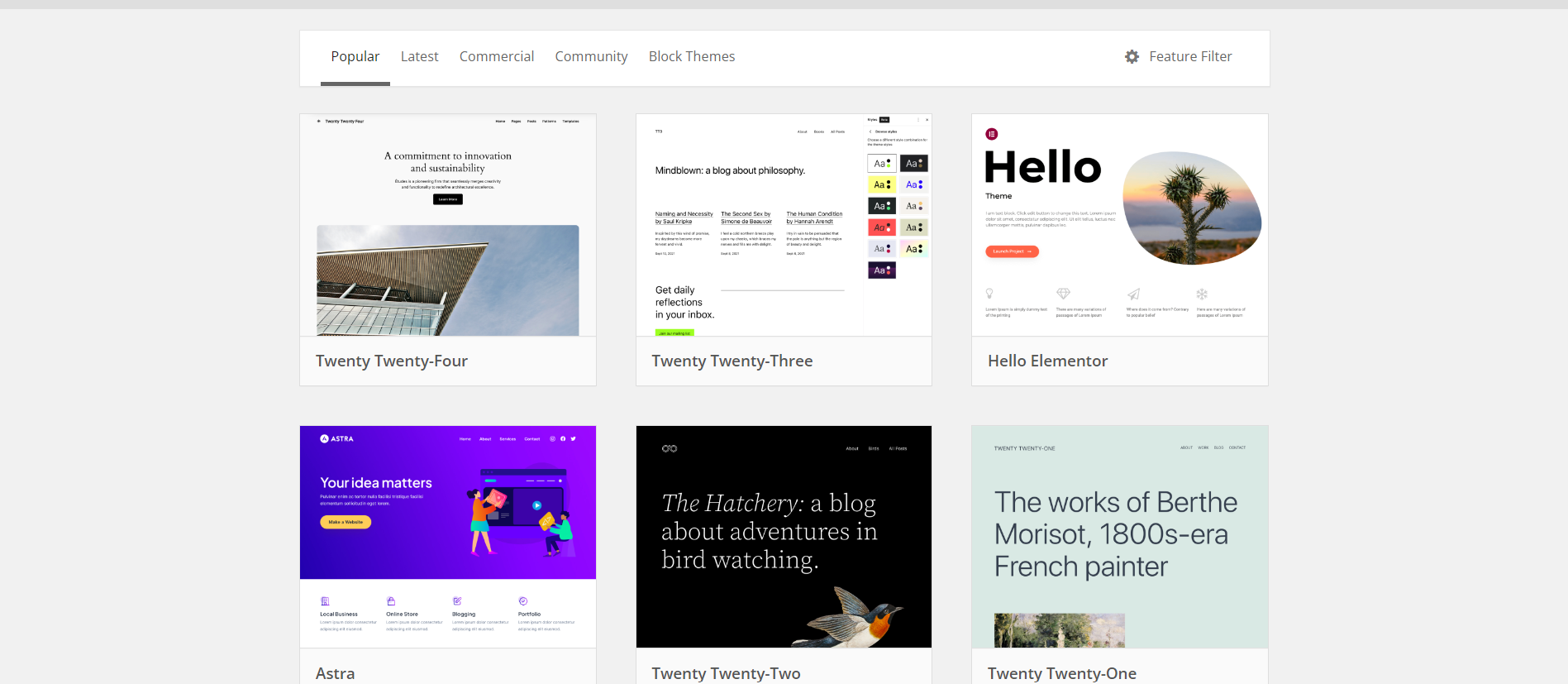

Compared to WordPress, Portfoliobox is a user-friendly platform that allows for the creation of professional portfolio websites, accessible to individuals at any skill level. It offers over 30 customizable templates tailored to a variety of professional needs and preferences, including galleries, blogs, and online stores. The platform also provides features for enhanced functionality such as Adobe Lightroom integration, SSL security, marketing tools, and SEO-friendly options.
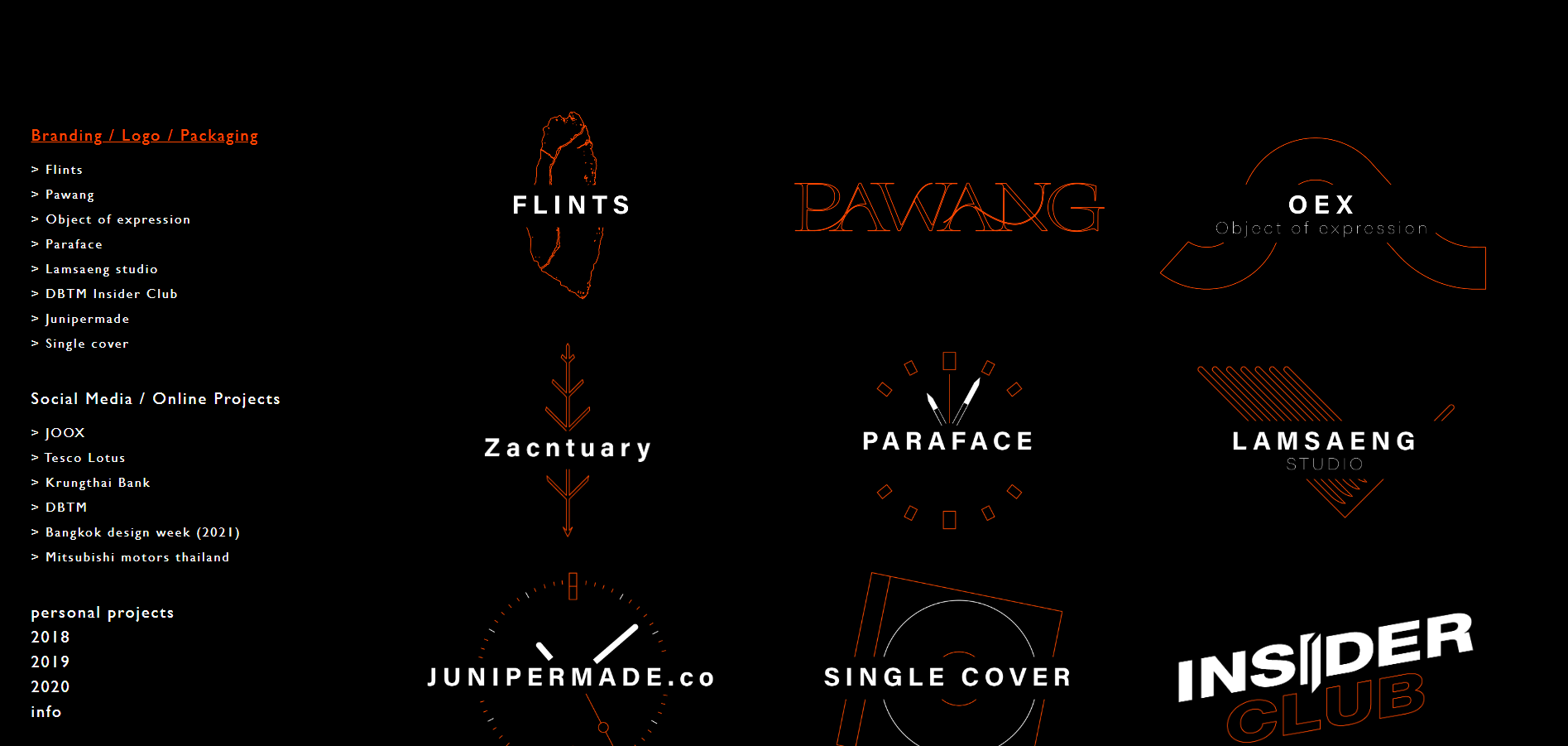
Get a head start on website creation with AI
Create a custom website tailored to your business needs 10X faster with 10Web AI Website Builder!
Ease of use
Ease of useReflects the platform’s overall user-friendliness.Score
Components:
- Learning curve (40%): Quickness and ease of getting started.
- Interface design (30%): Simplicity and intuitiveness of layout.
- User guidance (20%): Quality of tutorials and support.
- Flexibility (10%): Adaptability to various user skills.
 7.2
7.2
 8.1
8.1
🏆 Winner: Portfoliobox
. Scoring 8.1, Portfoliobox is designed with creative professionals in mind, offering an intuitive drag-and-drop interface and customizable templates that make it easy to create stunning portfolios without technical skills. WordPress, with a score of 7.2, provides extensive customization options but comes with a steeper learning curve, making it less accessible for beginners.
Learning Resources
🏆 Winner: WordPress
. WordPress boasts a vast array of learning resources, including detailed documentation, community forums, and online tutorials, making it easier for users to learn and adapt. Portfoliobox also offers comprehensive learning materials, but WordPress’s extensive support network gives it the edge.
For ecommerce
EcommerceMeasures the platform’s effectiveness in supporting online business activities.Score Components:
- Ecommerce themes and templates (20%): Variety and design of templates.
- Product management (25%): Ease of managing and organizing products.
- Payment options (25%): Variety and convenience of payment methods.
- Ecommerce features (20%): Features for managing an ecommerce store.
- Integration (10%): Compatibility with external e-commerce tools and services.
 8.4
8.4
 5.8
5.8
WordPress, leveraging plugins like WooCommerce, provides a comprehensive ecommerce solution with extensive customization options, making it suitable for a wide range of online stores. Portfoliobox, while user-friendly and tailored for creative professionals, offers basic ecommerce features that may not meet the needs of larger businesses.

|

|
|
|---|---|---|
|
Ecommerce themes and templates |
9.2 |
3.0 |
|
Product page customization |
9.0 |
6.0 |
|
Payment processing and commissions |
7.5 |
7.0 |
|
POS capabilities |
6.5 |
2.0 |
|
Payment gateways |
8.5 |
5.0 |
|
Product numbers |
7.0 |
5.5 |
|
Additional ecommerce features |
8.0 |
4.5 |
WordPress ecommerce features:
- WooCommerce Integration
- Multiple Payment Gateway Support
- Abandoned Cart Recovery
- Ecommerce Analytics
- SEO Optimization Tools
- Extensive Plugin Ecosystem
Portfoliobox ecommerce features:
- Product listings
- Payment Gateways integrations
- Shipping rates and tax calculations
- Order management
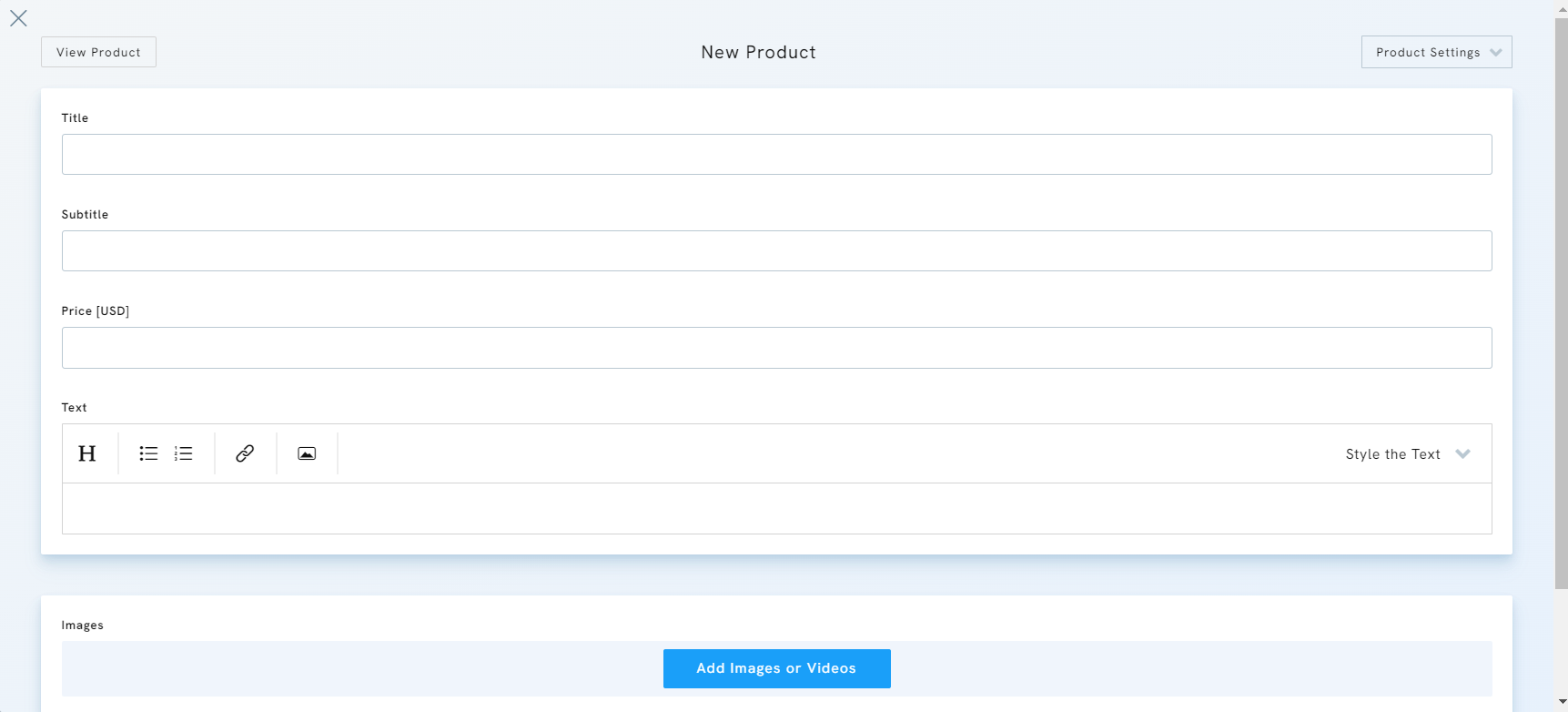
Ecommerce themes & templates
WordPress offers hundreds to potentially thousands of ecommerce and WooCommerce specific themes and templates, both free and premium, with the number constantly changing due to new themes and updates. In contrast, Portfoliobox does not have ecommerce-specific templates, which may limit the design flexibility for online stores.
Product page customization
WordPress, through WooCommerce, offers extensive customization for ecommerce product pages, balancing plugins, page builders, and custom coding. Essential elements include quality product images, detailed descriptions, and effective add-to-cart buttons. Advanced features like product tabs, upsells, and related products are customizable. Tools like Elementor and the Ultimate Product Catalog plugin enhance functionality, but heavy plugin use may affect site performance.
Portfoliobox offers a streamlined process for customizing product pages on its website builder. Users can create a product by adding details like title, description, and media, set a release date, and manage inventory and tax options. They can also edit product settings, such as the URL and shipping options, and apply discounts. These features are designed to help users effectively manage their online store and products within the Portfoliobox environment.
Payment processing
WordPress doesn’t handle payments directly but offers plugin options for payment processing. Popular gateways include PayPal, Stripe, Authorize.Net, and Square. Choose a gateway based on transaction volume, currencies, fees, and security. Plugins integrate gateways with WooCommerce for a user-friendly setup. Consider options for recurring payments, offline payments, and fraud prevention. Research, read reviews, and start small, scaling as needed.
Portfoliobox supports selling prints, art, craft, or services online through its ecommerce solution, and notably, they do not charge any commission for transactions made through their platform. While specific payment gateways are not detailed, Portfoliobox mentions accepting credit card payments (Visa, Master, & Maestro) for its subscriptions, implying these may also be supported for transactions within its ecommerce functionality. However, there’s no explicit mention of POS (Point of Sale) capabilities, suggesting that the platform is primarily focused on online sales rather than physical retail or in-person transactions.
Website Editors
Website EditorsEvaluates the platforms’ website building and editing capabilities.Score Components:
- Customization tools (40%): Range and power of editing features.
- Editor usability (30%): User experience within the editor.
- Design flexibility (20%): Freedom in layout and design changes.
- Update and maintenance ease (10%): Simplicity of updating and maintaining the site.
 8.5
8.5
 7.5
7.5
🏆
Winner: WordPress
. WordPress, with a score of 8.5, offers a powerful Site Editor with a block-based editing system, extensive customization options, and a user-friendly interface. It is suitable for users of varying skill levels, providing a WYSIWYG interface, a wide range of blocks and widgets, and comprehensive template management. WordPress also supports advanced customization through HTML, CSS, and API access, making it a versatile choice for various website needs.
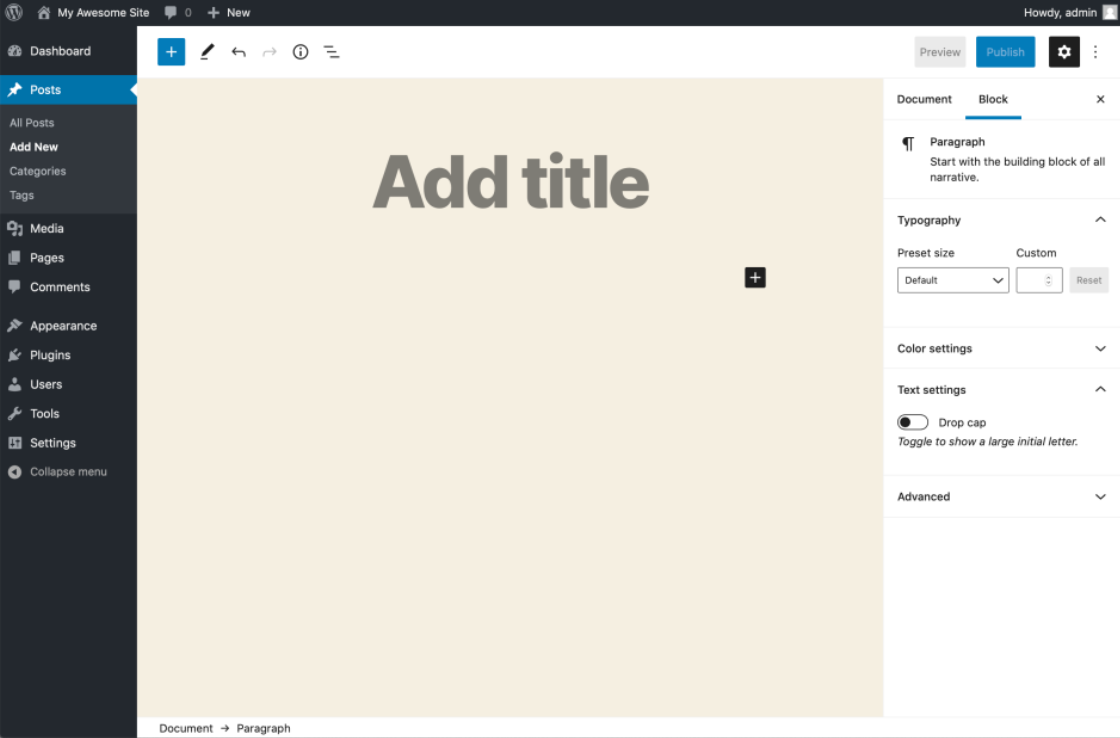
Portfoliobox, scoring 7.5, is tailored for creative professionals, offering a user-friendly website builder with customizable templates and intuitive design tools. It provides a variety of specialized widgets and blocks, responsive design, and eCommerce capabilities. While it is praised for its ease of use and features, some users may find its design tools limited for advanced needs. Portfoliobox supports HTML/CSS embedding for custom code possibilities.
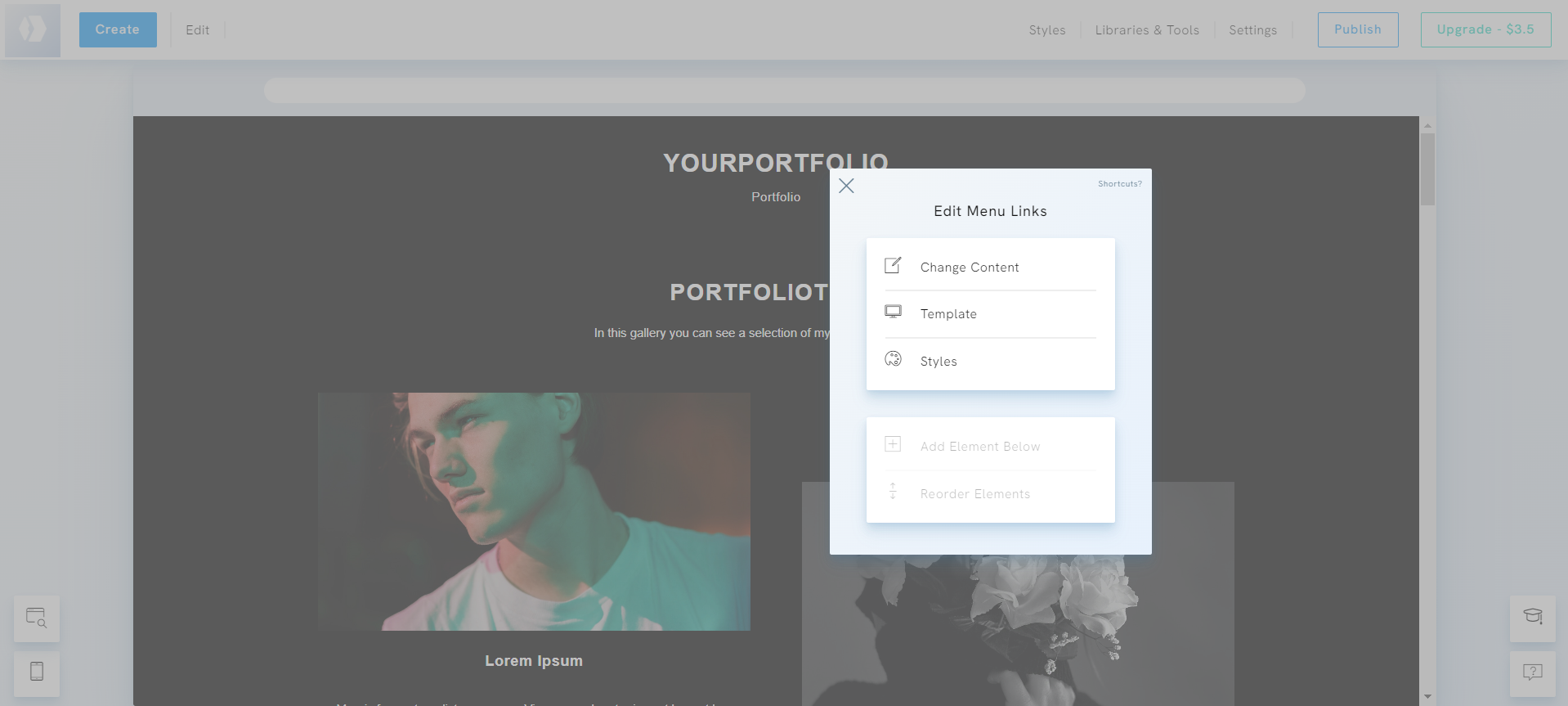
Mobile editor/app
 8.1
8.1
 0
0
🏆
Winner: WordPress
. WordPress offers a mobile editor app that allows users to manage their websites on the go. With this app, you can create and edit posts, manage comments, schedule content, and analyze website traffic from your phone or tablet. While it provides convenience and basic functionality, it does have some limitations compared to the web-based editor, such as fewer advanced options, restricted code access, and limited design customization.
Portfoliobox, on the other hand, does not have a dedicated mobile editor app, which limits its usability for users who need to make updates or manage their portfolios from mobile devices.
In summary, WordPress stands out in this category due to its mobile editor app, offering greater flexibility and convenience for managing your website on the go.
Product testing options
Product Testing OptionsAssesses the options for trying out platform features before commitment.Score Components:
- Trial quality (40%): Extent and usefulness of the trial or free version.
- Feature accessibility (30%): How many features are available to test.
- Trial duration (20%): Length of the trial period.
- Ease of transition (10%): Smoothness of moving from trial to paid plans.
 8.1
8.1
 9.1
9.1
Overall Result
:
Portfoliobox wins
. Portfoliobox scores 9.1, surpassing WordPress’s score of 8.1. Portfoliobox offers a 30-day free trial with access to all features and a 14-day money-back guarantee, providing a thorough evaluation period. WordPress, as an open-source CMS, is free to use but does not offer a trial or premium feature testing.

|

|
|
|---|---|---|
|
Free Plan |
Yes (open source software) | No |
|
Trial Duration |
No | 30 days |
|
Testing Premium Features |
No | All features within the trial period |
Price
PriceLooks at the cost-effectiveness and value for money of each platform.Score Components:
- Plan value (40%): What each pricing tier offers.
- Transparency and clarity (30%): Clearness of pricing structures.
- Flexibility of plans (20%): Range of options to suit different budgets.
- Hidden costs (10%): Additional expenses not included in the plan.
 5.9
5.9
 7.9
7.9
Portfoliobox offers straightforward pricing plans with significant discounts for annual subscriptions, while WordPress requires separate purchases for hosting and domain services, making its cost variable.

|

|
|
|---|---|---|
|
Free |
Free Plan ($0/month): WordPress is open source software that is free. WordPress does not provide hosting services; so, it is necessary to purchase a domain, web hosting, and website builder subscriptions separately. While WordPress lacks built-in ecommerce, plugins like WooCommerce offer a solution. WordPress offers an extensive variety of templates and designs. WordPress lacks a built-in AI-assisted builder, but its open-source nature allows for an ecosystem of plugins and themes incorporating AI for website building. |
No offering at this amount |
|
$0-$10 |
No offering at this amount. |
Light ($5.50/month): 50 Images, 10 Pages, 5 Products, 1 Password Protected Page, 1 Booking Service, 1 Scheduling Service, 1 Invoice, 1 QR Code, 25 mb File Sharing Value for Price: 6.0 |
|
$10-$15 |
No offering at this amount. |
Pro ($14.50/month): 500 Images, 50 Pages, 10 Products, 2 Password Protected Pages, 2 Booking Services, 2 Scheduling Services, 2 Invoices, 2 QR Codes, 50 mb File Sharing, Customizable Templates, Free Custom Domain (yourname.com), 24/7 Support Value for Price: 7.5 |
|
$15+ |
No offering at this amount. |
Pro Plus ($18.50/month): 1,000 Images, 1,000 Pages, 1,000 Products, 1,000 Password Protected Pages, 1,000 Booking Services, 1,000 Scheduling Services, 1,000 Invoices, 1,000 QR Codes, 5,000 mb File Sharing, Customizable Templates, Free Custom Domain (yourname.com), 24/7 Support, No “Powered by Portfoliobox” Link, Adobe Lightroom Integration Value for Price: 9.0 |
location. As a result in rare cases the prices displayed here can differ from the ones you see on their
websites.
Hosting quality
Hosting
qualityExamines the reliability and performance of the hosting solutions.Score Components:
- Uptime (40%): Consistency and reliability of website availability.
- Speed (30%): Loading times and performance.
- Bandwidth and storage (20%): Sufficiency of resources provided.
- Data centers (10%): Quality and distribution of hosting infrastructure.
 0
0
 6.5
6.5
🏆
Winner: Portfoliobox
Portfoliobox offers managed cloud hosting with unlimited bandwidth and secure communications, making it a reliable choice for creative professionals. WordPress, on the other hand, does not provide hosting directly, leaving users to choose from various third-party hosting options, which can vary in quality and reliability. This makes Portfoliobox the better option for those seeking a straightforward hosting solution.

|

|
|
|---|---|---|
|
Do they offer hosting? |
No |
Yes, with unlimited bandwidth and secure communications through HTTPS on CDN servers |
|
Data Centers: |
Depends on hosting provider |
Portfoliobox does not disclose the locations of its data centers |
|
Type of hosting: |
Depends on hosting provider |
Managed Cloud Hosting |
|
Uptime: |
Depends on hosting provider |
Portfoliobox does not disclose uptime statistics |
|
Uptime Guarantee: |
Depends on hosting provider |
No |
Website Speed Optimization
Website Speed OptimizationEvaluates optimization of website loading timesScore Components:
- PageSpeed Score (30%): Google’s score indicating performance optimization.
- Loading Time (30%): The average time until a website is fully interactive.
- Mobile Optimization (15%): Optimization effectiveness for mobile devices.
- Resource Optimization (15%): Optimizing images, scripts, and other heavy resources.
- CDN Usage (10%): Use of CDN to enhance speed across geolocations.
 6.5
6.5
 6.4
6.4
🏆 Winner: WordPress
Both WordPress and Portfoliobox offer various strategies for website speed optimization, but WordPress has a slight edge due to its extensive resources and flexibility through plugins.

|

|
|
|---|---|---|
|
Focus |
Extensive customization through plugins |
Built-in optimization features |
|
Performance Tools |
Core Web Vitals, WP Rocket, Hummingbird |
Integrated CDN, Caching |
|
Key Strategies |
Numerous learning resources |
CDN, Caching, Responsive Design |
|
Load Times |
Varies widely, dependent on optimization |
Varies depending on optimization |
|
Page Speed Scores Range |
Scores vary; influenced by apps, images |
Varies depending on optimization |
|
Core Web Vitals Improvement |
Provides valuable resources |
No specific information provided |
WordPress is an open-source content management system that offers extensive customization options through themes and plugins, making it suitable for a wide range of websites, including blogs, business sites, and online stores. While WordPress itself does not have a specific strategy for website speed optimization, it provides numerous resources and tools to help users enhance their website’s performance. These include analyzing Core Web Vitals (CWV), choosing a reliable host, optimizing images, minimizing plugins, using lazy loading, and employing a CDN. Tools like Core Web Vitals, WP Rocket, and Hummingbird are commonly used to improve website speed, and AMP can be considered for mobile speed optimization. Load times and PageSpeed scores for WordPress sites vary widely, depending on the level of optimization applied.
Portfoliobox, on the other hand, is a user-friendly website builder designed for creative professionals. It offers built-in optimization features such as CDN, caching, and responsive design to enhance website speed. While Portfoliobox does not provide specific information on Core Web Vitals improvements, its integrated features help ensure that websites load quickly and perform well. Load times and PageSpeed scores for Portfoliobox sites also vary depending on the level of optimization applied.
In conclusion, while both platforms offer effective strategies for website speed optimization, WordPress’s extensive resources and flexibility through plugins give it a slight edge over Portfoliobox.
Get a head start on website creation with AI
Create a custom website tailored to your business needs 10X faster with 10Web AI Website Builder!
Plugins and integrations
Plugins and integrationsMeasures the range and effectiveness of additional plugins and integrations.Score Components:
- Variety of options (40%): Range of available add-ons.
- Integration smoothness (30%): Ease of integrating plugins into the site.
- Quality of plugins (20%): Functionality and reliability of the options.
- Custom integration capabilities (10%): Support for custom or third-party integrations.
 8.8
8.8
 7.2
7.2
🏆 Winner: WordPress.
WordPress scores 8.8, leading the way with its extensive range of plugins and integrations. With over 60,000 free plugins and thousands of premium options, WordPress offers unparalleled customization and functionality across various domains, including ecommerce, SEO, social media, and more. Portfoliobox, with a score of 7.2, provides a solid range of integrations primarily through Common Ninja and Elfsight platforms, catering well to creative professionals. However, it falls short in comparison to the vast ecosystem available on WordPress.
It is worth mentioning that Portfoliobox’s integrations are particularly tailored for creative professionals, offering tools that enhance the presentation and functionality of portfolio websites.
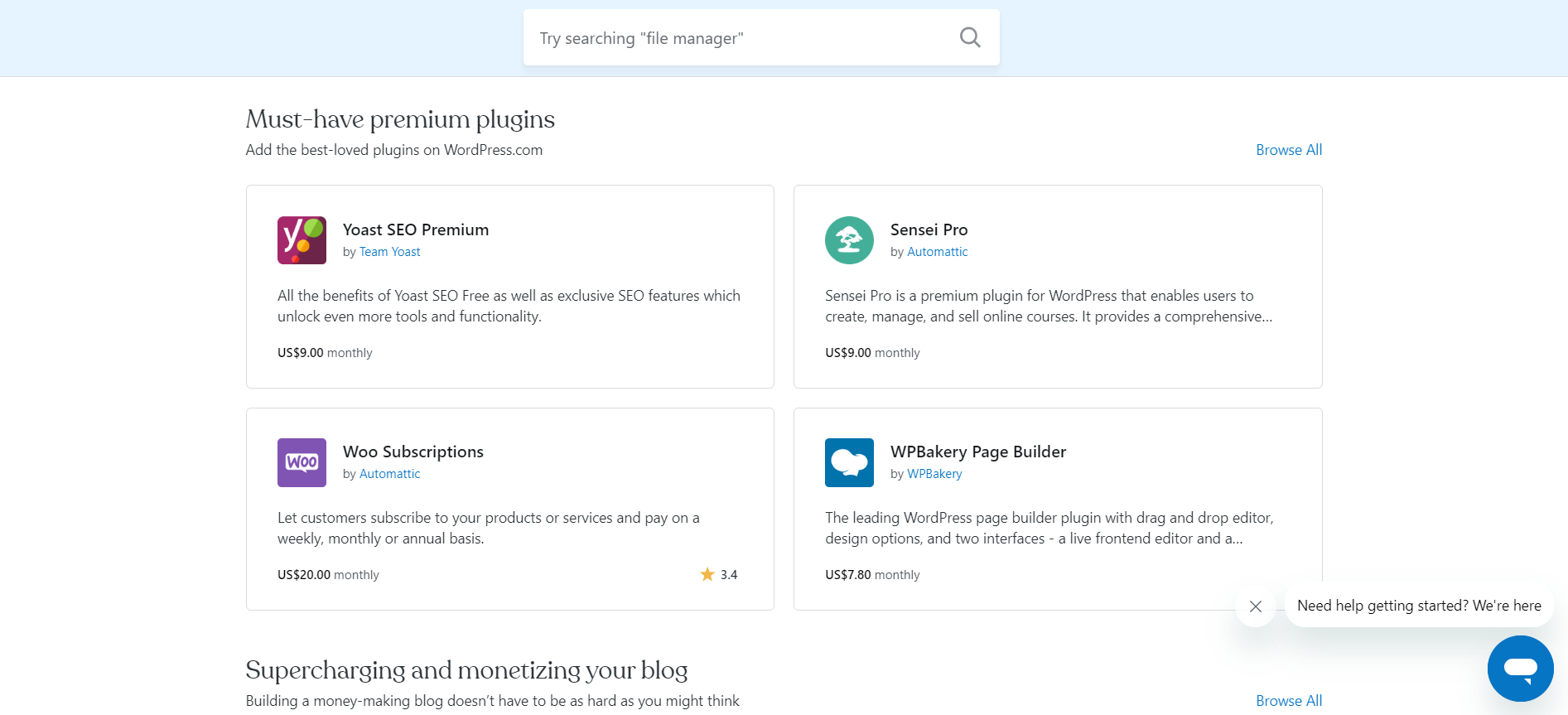
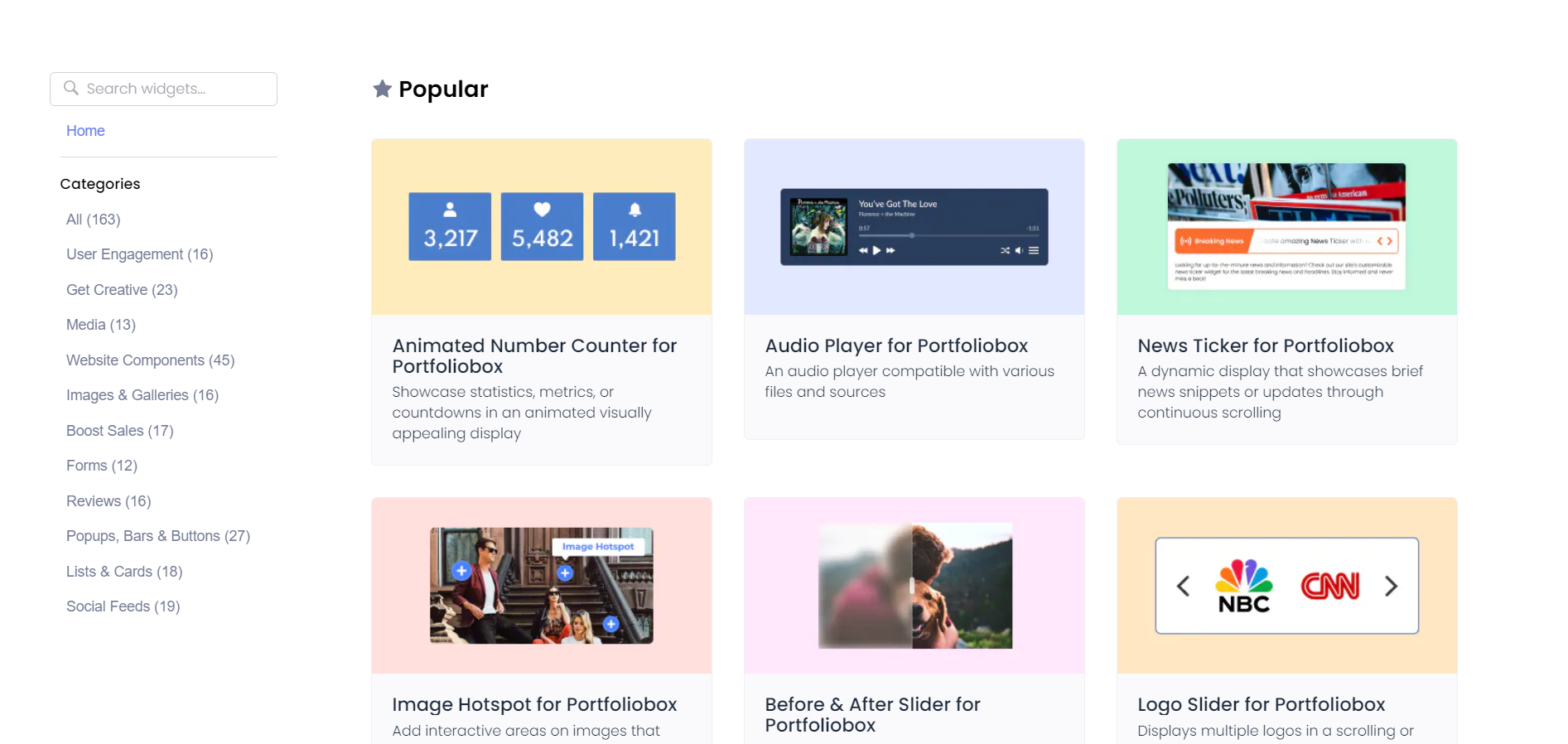
Marketing Features
Design FunctionalitiesRepresents how well each platform allows for creative design and customization of websites.Score Components:
- Template Variety (30%): Range and quality of design templates.
- Customization (30%): Flexibility and options for design alterations.
- User Interface (20%): Ease and intuitiveness of the design process.
- Responsiveness (10%): Adaptability to different devices and screen sizes.
- Innovation (10%): Unique design features and tools.
 8.0
8.0
 7.0
7.0
🏆
Overall Winner: WordPress
. WordPress excels with its extensive plugin ecosystem, offering advanced marketing tools and customization options. Portfoliobox is user-friendly and ideal for creative professionals but lacks some advanced marketing features.

|

|
|
|---|---|---|
|
SEO Tools |
✓ |
✓ |
|
Email Marketing |
✓ (via plugins) |
✓ |
|
Blogging |
✓ |
✓ |
|
Social Media Integration |
Plugins for direct linking, automatic posting, and social feeds display |
Easy linking and social post creation |
|
Analytics and Reporting |
In-depth analysis via plugins like Google Analytics for WordPress |
Basic analytics for website traffic and engagement |
|
Ads and Promotions |
Support for Google Ads and ad management through various plugins |
Not available |
Customer Support
Customer supportEvaluates the quality and availability of support options.Score Components:
- Response time (40%): Speed of support responses.
- Support quality (30%): Effectiveness and helpfulness of the support.
- Availability (20%): Range of support channels (phone, chat, email).
- Resource richness (10%): Quality of self-help and educational materials.
 5.0
5.0
 7.0
7.0
🏆 Winner: Portfoliobox
. In the comparison of WordPress vs Portfoliobox, Portfoliobox takes the lead with its 24/7 customer support. Users appreciate the dedicated support team that is always available to provide professional guidance and assistance, ensuring that help is accessible whenever needed.
WordPress, on the other hand, lacks direct customer support due to its open-source nature. Users must rely on community forums, the WordPress codex, and support from hosting providers or plugin and theme developers. While these resources can be helpful, they do not offer the same level of immediate, personalized support that Portfoliobox provides.
Security
SecurityLooks at the platforms’ security measures and data protection.Score Components:
- Data protection (40%): Safeguards for user and customer data.
- SSL and encryption (30%): Implementation of secure connections.
- Compliance (20%): Adherence to industry security standards.
- Regular updates (10%): Frequency of security updates and patches.
 6.7
6.7
 8.1
8.1
🏆
Winner: Portfoliobox
. Portfoliobox excels in security with a score of 8.1, emphasizing robust data protection and compliance with GDPR. It ensures secure handling of personal data, offers free SSL certificates for all domains, and employs strong authentication measures like passwords and OTPs for critical actions. These features make it a reliable choice for creative professionals who prioritize data security.
WordPress, with a security score of 6.7, offers flexibility through various plugins for enhancing website security. Users can implement site backups, malware scanning, and other protective measures. However, the security level can vary depending on the hosting provider and the specific plugins used, making it less consistent compared to Portfoliobox’s built-in security features.
AI Capabilities
AI capabilitiesMeasures the effectiveness of AI-driven features and tools.Score Components:
- Automation efficiency (40%): Impact of AI on streamlining processes.
- Personalization (30%): AI-driven customization for users or customers.
- AI-Assisted design (20%): Role of AI in website design and functionality.
- Data analysis (10%): Use of AI in interpreting user data and analytics.
 6.1
6.1
 0
0

|

|
|
|---|---|---|
|
AI Builder |
WordPress lacks a built-in AI builder but supports various AI plugins |
Portfoliobox does not have an AI builder |
|
AI Ecommerce Features |
AI plugins for marketing, personalization, and SEO |
Portfoliobox does not have AI ecommerce features |
|
AI Content Generation |
AI plugins for content writing and management |
Portfoliobox does not have AI content generation features |
|
Additional AI Features |
Wide range of AI-powered plugins |
Portfoliobox does not have any AI features |
🏆 Winner: WordPress
. WordPress, with a score of 6.1, leverages its open-source nature to integrate a variety of AI plugins, enhancing its capabilities in content generation, eCommerce, and overall website management. Although it does not have built-in AI features, the availability of numerous plugins allows users to customize their AI experience extensively.
Portfoliobox, with a score of 0, does not offer any AI capabilities. It focuses on providing a user-friendly platform for creative professionals without incorporating AI features.
User Management
User ManagementAssesses the platforms’ capabilities in managing user roles, permissions, and accessibility.Score Components:
- Role Customization (40%): Flexibility in creating and defining user roles and
permissions. - Ease of Management (30%): User interface and tools for managing users.
- Access Control (20%): Effectiveness of access control measures for different user
levels. - Scalability (10%): Ability to manage a growing number of users efficiently.
 8.8
8.8
 2.8
2.8
🏆 Winner: WordPress
. Managing your online team with WordPress and Portfoliobox involves different approaches to website editing access.
- WordPress offers a robust user management system with multiple roles and permissions, making it suitable for larger teams and collaborative projects.
- Portfoliobox is limited to a single user managing and editing the website, which may be restrictive for larger teams or collaborative efforts.
WordPress User Roles and Access Levels:
| Role | Description | Access Highlights |
|---|---|---|
| Super Admin | Manages the entire network in WordPress Multisite. | Network admin, manage sites, users, plugins, themes. |
| Administrator | Full access within a single site. | Manage plugins, themes, users, all posts/pages. |
| Editor | Manages and publishes content, including others’ posts. | Edit/publish all posts, manage comments, categories. |
| Author | Publishes and manages their own posts. | Write, edit, publish own posts, upload files. |
| Contributor | Writes and edits their own posts but cannot publish. | Write, edit own posts (no file uploads or publishing). |
Additional Features

|

|
|
|---|---|---|
|
SSL Certificate |
N/A |
✓ |
|
Custom Domain |
N/A |
✓ |
|
Free Custom Domain Included |
N/A |
✓ |
|
International Domains |
N/A |
✓ |
|
Mobile Responsive |
N/A |
✓ |
|
Page Speed |
N/A |
✓ |
|
Website Builder Mobile App |
N/A |
X |
|
Convert a Website To An App |
N/A |
X |
|
Website Analytics |
N/A |
✓ |
|
Multilingual Sites |
N/A |
✓ |
|
Multiple Users |
N/A |
X |
User Feedback
WordPress receives praise for its user-friendliness, cost-effectiveness, extensive themes and plugins, customization options, and supportive community. However, users mention technical challenges, security concerns, a learning curve, and a lack of direct support. Overall, it remains a widely used and versatile platform, especially beneficial for startups and small businesses.
Users overwhelmingly appreciate Portfoliobox for its user-friendly interface, making it straightforward for both beginners and professionals to create and manage online portfolios. The platform’s customizable design options, responsive layouts, and diverse template selection stand out as significant advantages, allowing users to express their personal style and showcase their work effectively across devices. However, some critiques include limited template options compared to competitors, a learning curve for less tech-savvy users, and minor glitches with features like autosave on different devices. Despite these challenges, the positive impact of Portfoliobox on users’ ability to present their work to potential clients and employers, along with its value in making portfolio creation accessible without coding knowledge, is consistently highlighted.
The making of this blog
We followed a clear, step-by-step process to write and research this article.
FAQ
Which platform is better for creative professionals, WordPress or Portfoliobox?
Can I use both WordPress and Portfoliobox for selling products online?
How do WordPress and Portfoliobox differ in terms of customization and design flexibility?
What are the major differences in pricing and value between WordPress and Portfoliobox?










